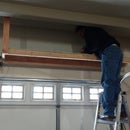Introduction: Cardboard Stand Up Paddleboard
FYI, this is my first instructable. This site is fantastic and hope it is as welcoming for my first instructable as I have seen it be for others! Paddle Boarding has become a very popular sport where I live during the summer. I already have gear for just about every other outdoor sport there is, so I can't justify spending over $400 for a mediocre SUP board when I can make one for less than $80. First step was to find the cardboard- to the industrial cardboard recycle bin!
Step 1: The Right Materials
I was lucky enough to come across this heavy duty cardboard that I would call "Laminated" it's got this great strata of multiple corrugated cardboard sheets in long 2"by3"by X' I found it in lengths of 5', 4' and less. This will be the bulk of the board- where the foam core blank would be on an expensive board.
Step 2: Arrangement
The first photo I have is of the VERY general shape that I'd like the board to take.
Step 3: Sheet Reinforcement
A few sheets of flat cardboard for this side.
Step 4: Nose, Tail Streamlining
This is the step where the lego-block look of the nose and the tail goes away a bit. long thin strips of cardboard rounded out both. I used old paint rollers (free!) sliced into about 2" high rounds to reinforce the curved pieces of cardboard for the nose and tail.
Step 5: Fin Creation and Attachment
Cutting out the fin is fairly easy, just choose a design, I took mine from competitive fins of similar sized paddle boards that are about 10' long. The fin or skeg itself is about six inches tall and four inches wide at the base. Reinforced sandwich pieces cut to be smaller than the middle piece will help to give the skeg the 3d wing effect that you want for the correct hydro-dynamics.
You can attach the skeg in a few different ways, I'm going to simply slide the skeg's wide base between two of the laminated cardboard "boards" and fiberglass over them.
Step 6: Fiberglassing
Having repaired many surfboards as a teen, I am fairly comfortable with mixing fiberglass resin, hardener and laying the fiberglass cloth in a quick and efficient manner. It always seems to make a mess so do it somewhere you're not worried about (like my deck) or put a large tarp down- make sure you don't let the resin dry onto your working surface. Following the fiberglass instructions to the letter will serve you well!
The board is now ride-able, and as long as you've glassed it up tight with several layers you now have a paddle board for about 1/6th the price of buying one, plus the pride of shaping it yourself.
For the sake of the instructable cardboard contest this is all you really need. I will certainly post follow up photos in an upcoming final step after my buddy who works/paints fiberglass repairs on motor coaches and airplanes helps me to make it look pretty!

Participated in the
Watersports Summer Challenge













